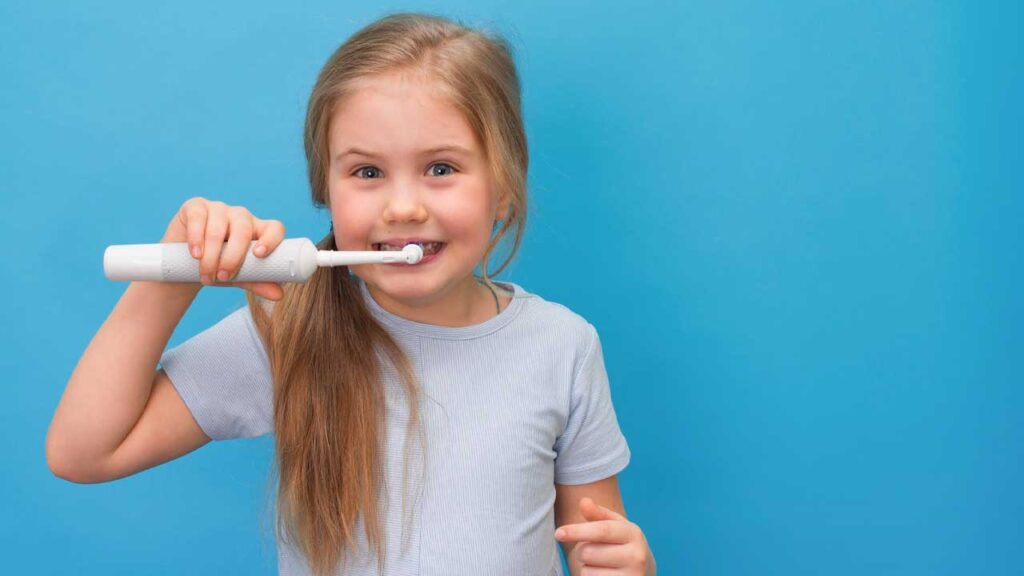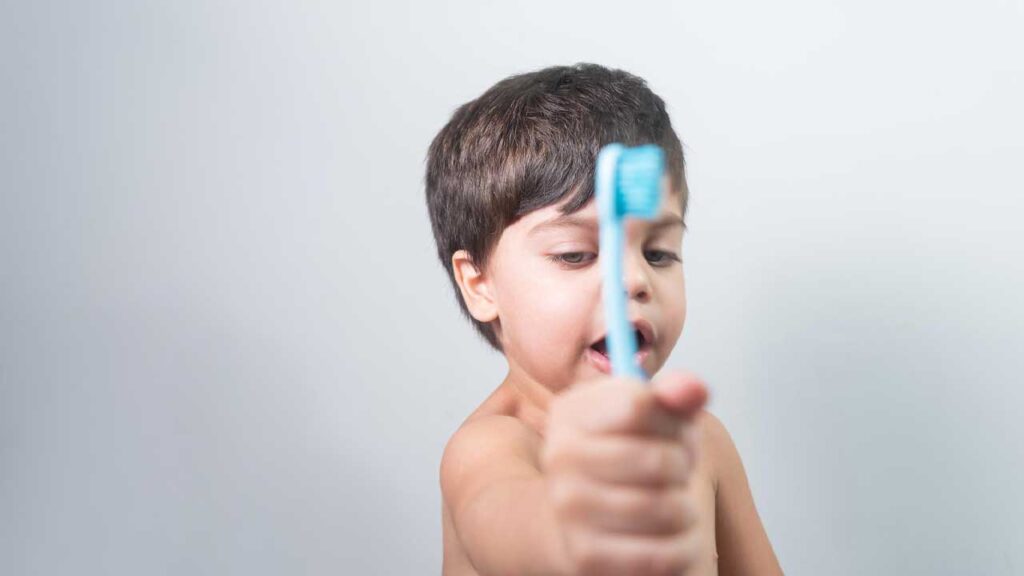Regular replacement of your toothbrush head is a cornerstone of dental hygiene. Over time, bristles become frayed and worn, losing their effectiveness. This doesn’t just compromise your cleaning power—it can also harbor bacteria, potentially leading to oral health issues.
Understanding the Lifecycle of a Toothbrush
A toothbrush’s life expectancy isn’t indefinite. While we may grow attached to our oral hygiene tools, they’re designed for limited use. Understanding when and why to replace them is vital for maintaining oral health.

Evaluating Toothbrush Wear and Tear
Indicators of Toothbrush Wear
| Indicator | Description | Action Required |
| Bristle Splay | Bristles flay outwards | Time to replace |
| Bristle Hardness | Bristles feel harder | Replace to avoid gum damage |
| Discoloration | Bristles look discolored | Replace to maintain hygiene |
| Bristle Density | Decreased bristle density | Replace for effective cleaning |
The Role of Brushing Technique
Your brushing technique directly impacts the longevity of your toothbrush. Aggressive brushing can shorten the lifespan of a toothbrush head, necessitating more frequent replacements.
Key Signs It’s Time to Switch Your Toothbrush Head
Warning Signs and Solutions
| Warning Sign | Solution |
| Frayed Bristles | Replace the head to ensure proper cleaning |
| Change in Color | New head to prevent bacterial buildup |
| Bristle Firmness | Replace to avoid damaging gums |
Assessing Bristle Integrity
The integrity of the bristles is your toothbrush’s most crucial aspect. When bristles bend and lose their stiffness, they can no longer clean effectively. This is a clear sign it’s time for a replacement.
In this section, we’ve discussed the importance of timely toothbrush head replacement and the signs that indicate it’s time to do so. From assessing the wear and tear of your toothbrush to understanding the lifespan of a brush head, these insights will help you maintain optimal oral health. Remember, a fresh toothbrush head not only promotes a healthy mouth but also supports overall wellness.
Comparing Toothbrush Types
When it comes to maintaining oral hygiene, the type of toothbrush you use can make a significant difference. Let’s delve into the lifespan of manual versus electric toothbrush heads and understand the technology behind them.
Manual Toothbrush Head Lifespan
| Factor | Manual Toothbrush Head |
| Average Lifespan | 3-4 months |
| Wear Indicators | Bristle splay |
| Replacement Signs | Color fading on bristles |
Manual toothbrush heads are the traditional choice. They are simple in design but effective for cleaning when used properly. Typically, they should be replaced every three to four months, or sooner if the bristles become frayed.
Electric Toothbrush Head Lifespan
| Factor | Electric Toothbrush Head |
| Average Lifespan | 3 months |
| Wear Indicators | Bristle stiffness loss |
| Replacement Signs | Bristle indicator color fading |
Electric toothbrush heads incorporate advanced technology that can lead to a more effective clean. They often feature bristles that fade in color to indicate when it’s time for a replacement, generally every three months.
Brush Head Technology and Design
Innovations in brush head technology and design are frequent, with features such as crisscross bristles for better plaque removal and pressure sensors to prevent hard brushing.
Expert Recommendations on Replacement Frequency
Dentists and the American Dental Association (ADA) provide guidelines to ensure the effectiveness of your toothbrush and safeguard your dental health.
Dentist and ADA Guidelines Comparison
| Source | Replacement Frequency |
| Dentist | Every 3-4 months |
| ADA | Every 3-4 months |
Experts agree that replacing your toothbrush head every three to four months is essential, but this may vary based on individual usage and brush wear.
Factors Influencing Replacement Timing
Several factors can affect when to replace your toothbrush head:
- Brushing force: Hard brushers may need to replace their heads more frequently.
- Usage frequency: More frequent brushing can wear out bristles sooner.
- Illness: After a cold or flu, it’s advisable to switch to a new toothbrush head.
Maximizing Oral Health Benefits
To reap the maximum benefits from your toothbrush, it’s crucial to understand how a fresh brush head can enhance oral health.
Ensuring Effective Plaque Removal
A new toothbrush head is more effective at removing plaque, which if left unchecked, can lead to gum disease and tooth decay.
Maintaining Oral Hygiene
Good oral hygiene extends beyond just teeth cleaning. It involves the care of gums and the tongue as well. A well-maintained brush head can help maintain overall oral cleanliness, contributing to better health.
Toothbrush Head Replacement After Illness
Sanitizing and Replacing Protocols
When you’re recovering from an illness, it’s crucial to consider the state of your toothbrush head. Pathogens can cling to the bristles and handle, potentially leading to re-infection. Here’s what you should know:
- Sanitizing: Soak the toothbrush head in antibacterial mouthwash for a few minutes to kill germs. Some toothbrushes come with UV sanitizing cases which can be especially effective.
- Replacing: After illnesses like strep throat or a cold, it’s wise to replace your toothbrush head to avoid the risk of re-infection.
Minimizing Health Risks
Switching to a new toothbrush head post-illness is not just about personal safety; it’s also a public health consideration. By doing so, you reduce the chances of spreading germs to family members.
- Avoid Sharing: Never share toothbrushes, especially when you’ve been sick.
- Storage: Store your toothbrush separately and upright to air-dry, which minimizes bacterial growth.
Special Considerations for Electric Toothbrush Users
Recognizing Replacement Cues
Electric toothbrush users must stay vigilant about the condition of their brush heads. Look out for:
- Frayed Bristles: These are less effective and may damage gums.
- Fading Indicators: Some electric toothbrushes have color-changing bristles that signal when it’s time for a replacement.
Electric Toothbrush Head Features and Replacement Times
| Feature | Description | Recommended Replacement Time |
| Fading Bristles | Bristles that fade from a bright color to a pale or white. | 3 months |
| Indicator Bristles | Bristles that prompt when it’s time to change. | When noticeable change occurs |
| Brush Head Type | Standard, Compact, Orthodontic, etc. | Varies, follow manufacturer’s advice |
Remember, while these features are helpful, they’re not substitutes for monitoring the physical state of your brush head.
The Impact on Oral Health
How Worn Bristles Affect Dental Health
Worn bristles are more than just ineffective; they can actively harm your dental health by:
- Inadequate Plaque Removal: This can lead to tartar build-up and cavities.
- Gum Damage: Frayed bristles can be harsh on delicate gum tissue.
Protecting Against Oral Diseases
A timely toothbrush head replacement plays a vital role in protecting against oral diseases such as gingivitis and periodontitis. By maintaining a fresh brush head, you ensure that you’re always at the peak of oral hygiene effectiveness.
- Regular Checks: Make it a habit to inspect your toothbrush head monthly.
- Professional Advice: If in doubt, ask your dentist for their recommendation on when to replace your toothbrush head.
Maintaining Your Toothbrush
Proper care of your toothbrush is pivotal in ensuring it remains effective and hygienic for as long as possible. Let’s explore some essential storage and sanitation techniques.
Proper Storage Techniques
Air It Out
Always store your toothbrush in an upright position and allow it to air dry. Storing a damp toothbrush in a closed container can promote microbial growth.
Separate to Avoid Cross-Contamination
If you share a bathroom, keep toothbrushes separate to prevent cross-contamination. This is especially important during cold and flu season or if a family member has a contagious illness.
Keep It Clean
Rinse your toothbrush thoroughly with tap water after use to remove toothpaste and debris. Do not use dishwashers, microwaves, or ultraviolet devices to clean your toothbrush—these can damage the brush.
Toothbrush Care and Sanitization Checklist
| Action Item | Description |
| Rinse Thoroughly | After brushing, rinse the toothbrush with water to remove remaining toothpaste and debris. |
| Air Dry | Store the toothbrush in an upright position and allow it to air dry until the next use. |
| Don’t Share | Never share toothbrushes with others. |
| Regular Replacement | Replace your toothbrush every 3-4 months or sooner if the bristles are frayed. |
Environmental Considerations
The environmental impact of toothbrushes is significant. Each year, billions of toothbrushes end up in landfills globally. Let’s consider some eco-friendly alternatives and sustainable practices.
Eco-Friendly Toothbrush Options
Bamboo Toothbrushes
Bamboo toothbrushes have biodegradable handles, making them a sustainable choice compared to plastic ones.
Recyclable Toothbrushes
Some brands offer toothbrushes made from recycled materials, which can be recycled again after use.
Sustainable Replacement Practices
Recycling Programs
Participate in toothbrush recycling programs. Many brands offer mail-back programs or drop-off locations for used products.
Composting
If you use a toothbrush with a biodegradable handle, consider composting the handle after removing the bristles.
Special Needs for Children and Orthodontic Patients
Children and individuals with orthodontic appliances have unique dental needs that require special attention when it comes to toothbrush replacement.
Pediatric and Orthodontic Toothbrush Replacement Schedule
| Patient Type | Replacement Frequency |
| Children | Every 3 months or after illness |
| Orthodontic Patients | Every 3 months or when bristles are worn |
Addressing Unique Dental Needs
Soft Bristles for Children
Children’s toothbrushes should have soft bristles and be the appropriate size for their age.
Specialized Orthodontic Brushes
Orthodontic patients should use specially designed brushes that can clean around braces effectively.
FAQs on Toothbrush Head Replacement
Maintaining a healthy smile begins with the basics, and one of the simplest yet most crucial practices is replacing your toothbrush head regularly. Let’s dive into some common questions and truths to ensure you’re equipped with the right information.
When Should I Replace My Toothbrush Head?
Signs of Wear:
- Frayed Bristles: If bristles are spread out or flattened, it’s time for a new head.
- Color Fade: Many toothbrushes have indicator bristles that fade in color to signal the need for replacement.
Is It Necessary to Replace My Toothbrush After Being Sick?
Health Comes First:
- Post-Illness Protocol: Swap out your toothbrush head after illnesses like the flu to prevent reinfection.
Can I Just Clean My Toothbrush Head Instead of Replacing It?
Clean vs. New:
- Sanitization Limit: While cleaning can remove bacteria, it doesn’t restore bristle integrity. Replacement is key.
Are There Any Myths About Toothbrush Care I Should Know?
Busting Myths:
- Myth: “Rinsing my toothbrush with water is enough to keep it clean.”
- Fact: Rinsing doesn’t remove all bacteria. Use hot water or a disinfectant, but remember, replacement is inevitable.
The act of changing your toothbrush head isn’t just about dental care; it’s about prioritizing your overall health. Through timely replacements, you not only maintain the effectiveness of your brushing routine but also safeguard your mouth from potential bacteria that can lead to oral diseases.
Embrace the Routine:
- Understand the lifespan of your toothbrush head and replace it every 3-4 months.
- Recognize the warning signs of wear and take immediate action.
By integrating these simple practices into your daily life, you can ensure that each brushing session contributes to your lasting oral health.
